Strokes gained is actually much easier to understand than most golfers realize. After five minutes of reading this blog post, and math no more complicated than subtraction, you can be well on your way to playing smarter and more accurate golf.
In this guide, we will show you how strokes gained works, give you some real course examples and explain the benefits of tracking strokes gained.
The Baseline
At its most fundamental level, strokes gained compares each shot you hit to a baseline. Did you hit a good shot or a bad shot? How good or how bad? It all depends on the baseline.
How To Get The Baseline
The strokes gained baseline comes from two pieces of data:
- The level of the player. You will want to compare yourself to a player similar in skill to yourself. If you are a 15 handicap, you may compare to a 10 handicap. If you are an aspiring professional, you may compare to PGA Tour players.
- The location of the ball. Where your ball starts and where it ends up tell us everything we need to know. Given where it started, did it end up better or worse than where your baseline player would have hit it?
Given those two pieces of data, we can calculate the critical number: the expected strokes to hole out. How many strokes will it take the baseline player to hole out from this location?
Baseline Examples
Let’s look at a few examples. In the table below, we’ll use two levels of player: a PGA Tour pro and a 15-Handicap amateur. We’ll look at their “expected strokes to hole out” from five different locations on the course.
As you can see, from 160 yards away in the fairway, the average PGA Tour Pro takes 2.98 strokes to get the ball into the hole. From that same position, a 15-handicap amateur will take an average of 3.92 strokes.
| Location | PGA Tour Pro | 15-Handicap |
|---|---|---|
| 400 yards away on the tee | 3.99 strokes | 5.32 strokes |
| 160 yards away in the fairway | 2.98 strokes | 3.92 strokes |
| 20 yards away in the bunker | 2.53 strokes | 3.05 strokes |
| 30 feet away on the green | 1.98 strokes | 2.24 strokes |
| 5 feet away on the green | 1.26 strokes | 1.59 strokes |
How Baseline Data Is Collected
You may already be asking yourself: “How do we know the number of strokes to hole out from every single spot on the course? That question seems enormously complicated.”
In fact, it is pretty complicated. To calculate strokes gained, you need to track lots and lots of golf shots by lots and lots of players. The PGA Tour uses the ShotLink system to gather data on millions of shots and establish these baselines.
For amateur golfers, suitable tracking technology hasn’t been available until recently. But today, apps like Pinpoint use GPS to collect data and compile them into averages. These averages give amateur players access to strokes gained statistics that they never had in the past.
Calculating Strokes Gained (By Example)
At this point, you should understand what strokes gained is, what the baseline is, and how we get baseline data. Now it’s time to see how this works on the golf course.
Strokes gained is calculated on every single shot. And the calculation is actually quite simple: take the expected “strokes to hole out” from your starting position and subtract the “strokes to hole out” from your ending position. That’s it!
In the following example, you’re playing the second hole at Pebble Beach, and using an average PGA Tour professional as the baseline.
You have already hit your drive into the fairway and have 200 yards left to the hole. The average PGA Tour professional will take 3.16 strokes to finish the hole from this position.
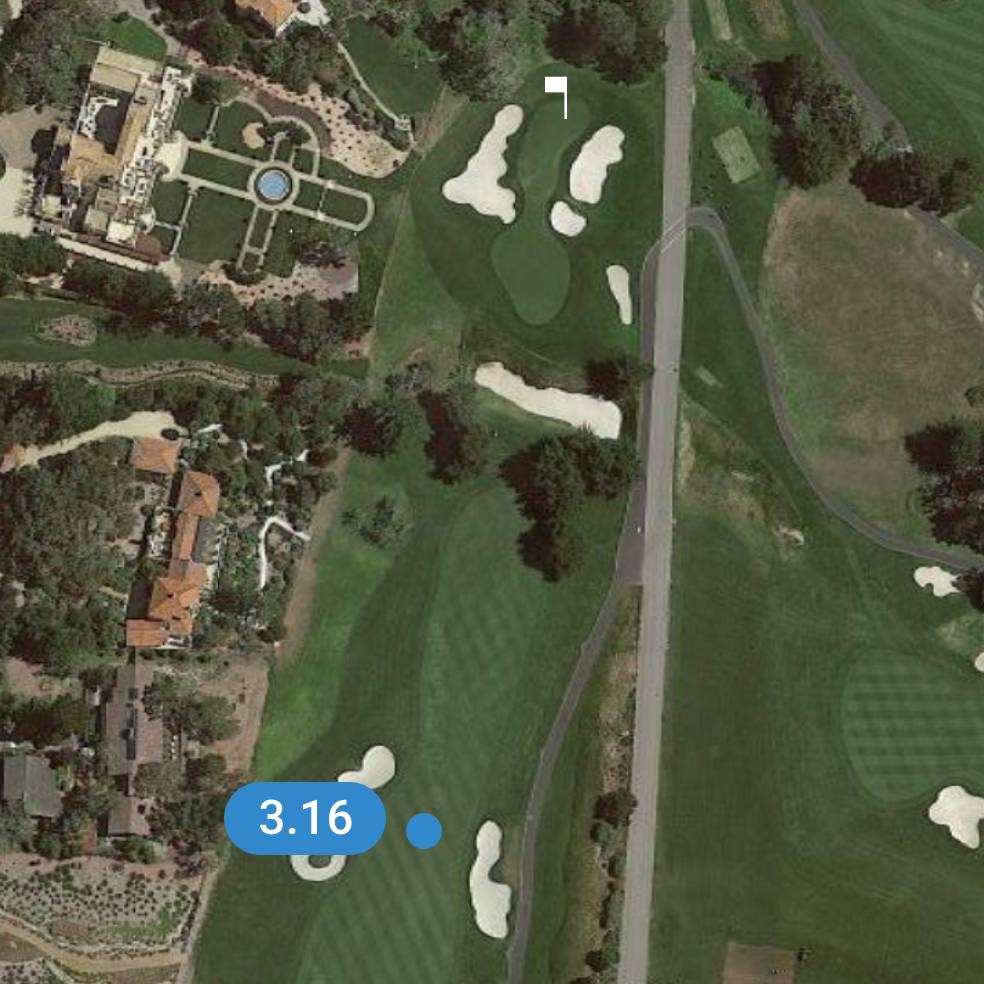
Example 1: Average Approach Shot (Zero Strokes Gained)
The next shot is your approach from 200 yards. It ends up on the green, 50 feet from the hole. From this position, the average PGA Tour pro takes 2.16 putts to get the ball in the hole.
In this example, you started 200 yards away in the fairway. The baseline “strokes to hole out” from that position was 3.16. You hit it to 50 feet away on the green, where the baseline “strokes to hole out” is 2.16. This is a perfectly average shot, with a strokes gained of zero. The formula looks like this:
3.16 - 2.16 - 1.0 = 0.0
(The “1” being subtracted is the shot that you just took.)
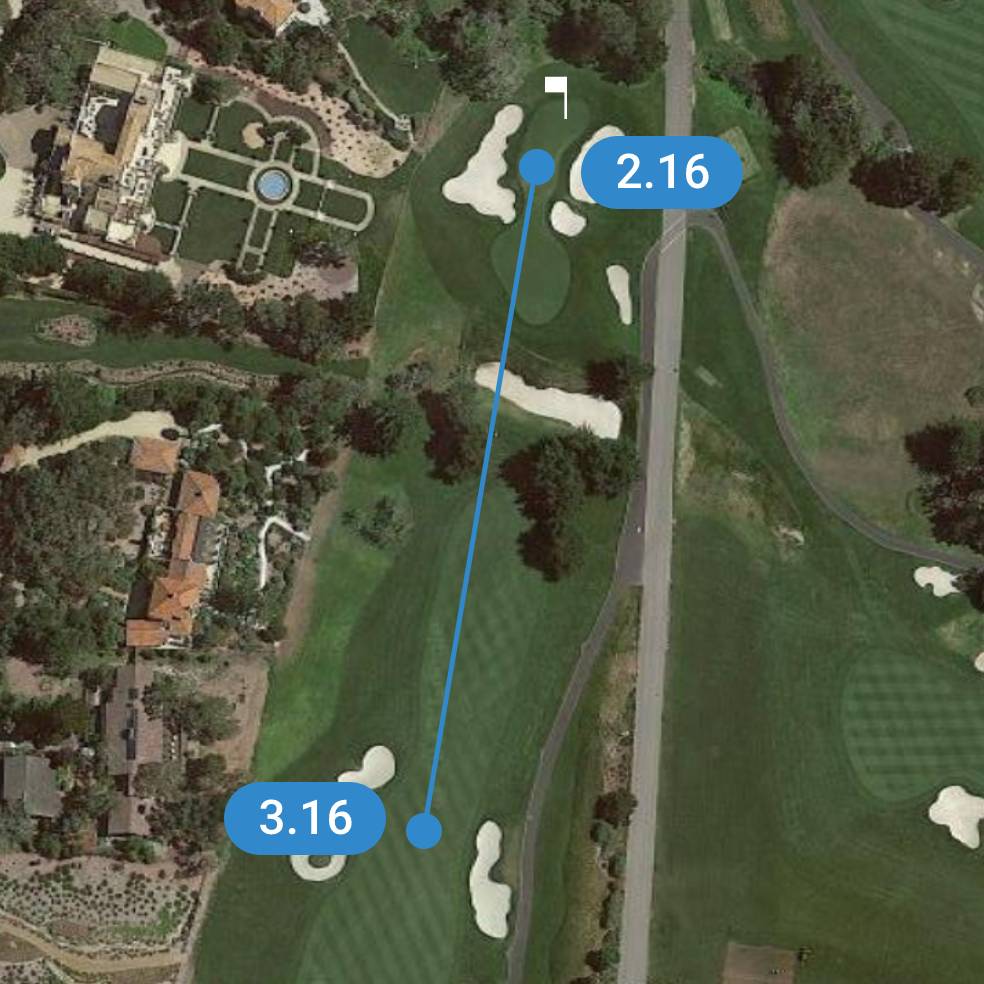
Example 2: Poor Approach Shot (Negative Strokes Gained)
We saw in our first example that a shot on the green about 50 feet from the pin gave us no positive or negative strokes gained. This time, from that same position of 200 yards from the hole, you end up blocking your shot right, leaving the ball in the rough.
Your distance from the pin is 30 yards away, and the average PGA Tour professional would take 2.61 strokes to get the ball in the hole from this position.
Let’s apply the same subtraction formula to this stroke. At 200 yards away, the average number of strokes to finish the hole is 3.16. From your new position in the rough, it is 2.61.
3.16 - 2.61 - 1.0 = -0.45
Your strokes gained is negative, indicating that this was a worse shot than the average PGA Tour pro would have hit.
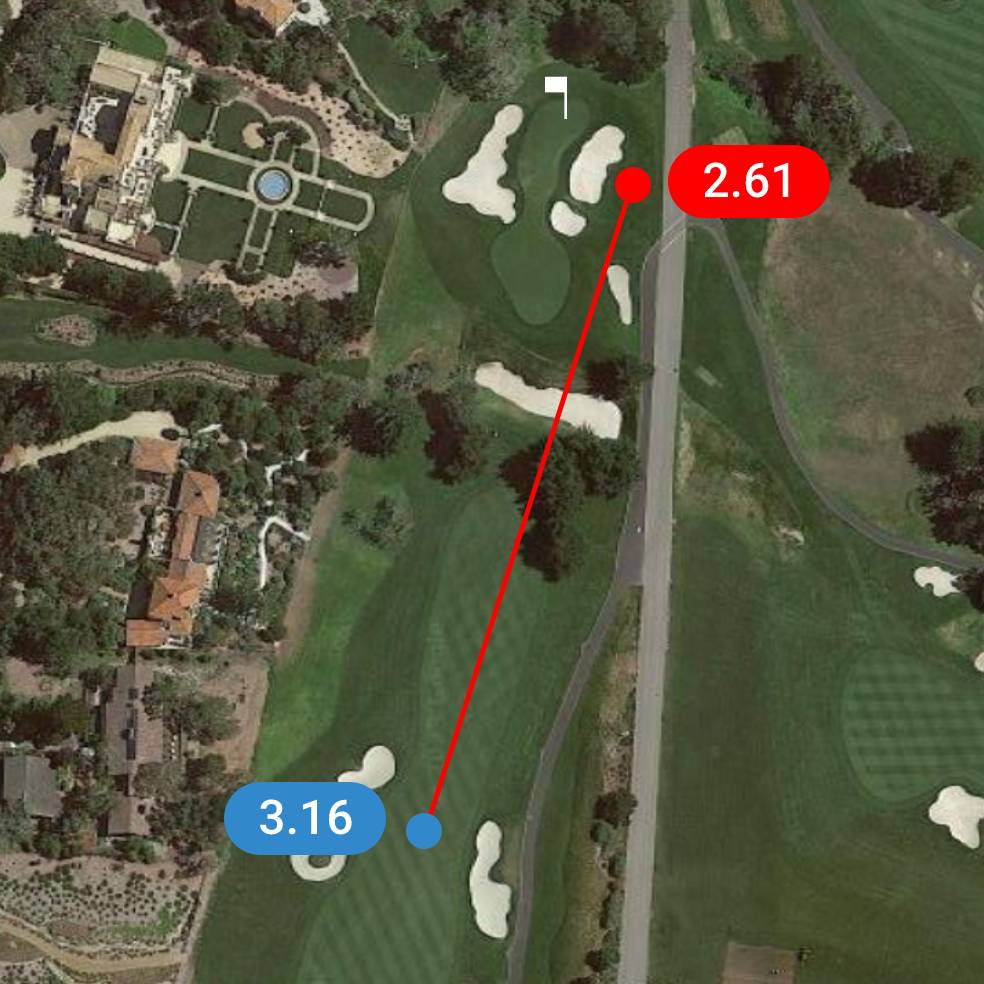
Example 3: Good Approach Shot (Positive Strokes Gained)
Now let’s take a look at what happens when you hit a good shot!
From that same 200-yard spot in the fairway, you hit your shot to 20 feet from the hole. This was a great swing and left you in a position where the average tour professional takes 1.87 shots to hole out.
The formula for this particular shot would look like this:
3.16 - 1.87 - 1.0 = +0.29
Your strokes gained is positive, indicating that this was a better shot than the average PGA Tour pro would have hit.
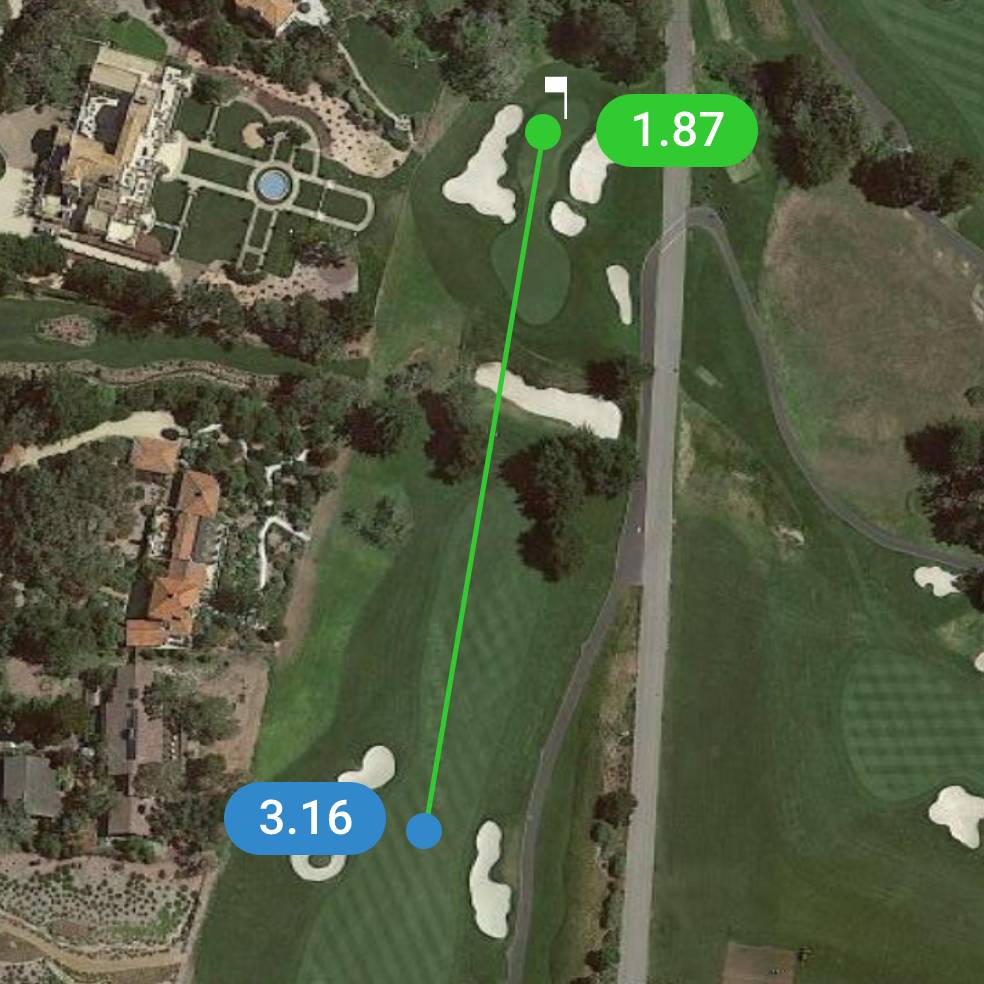
Combining The Data Across Strokes
In our examples, we showed you how strokes gained is calculated for a single stroke. But the magic of strokes gained is how you can roll up these numbers to look at every area of your golf game.
Once we’ve calculated strokes gained for all of our individual shots, we can add those strokes gained numbers together to detailed analytics about overall performance relative to our baseline.
Let’s say you have 30 putts in a round. Some of those putts had positive strokes gained and others negative. By adding up the strokes gained on putts, you see that overall you gained +0.25 strokes putting.
This +0.25 means that you putted about a ¼ shot better than your baseline, even though some of your putts had negative strokes gained and others had positive.
If you were to calculate just the number of putts you made that day on the course (30), it would not give you the detailed information to know whether you putted well or not. Only strokes gained can give you that level of insight.
Areas of The Game
Using strokes gained, you can add up any combination of shots to get insight on virtually any area of your game. From broad categories:
- Driving
- Approach
- Short Game
- Putting
To much more specific areas:
- Approach from inside 100 yards
- Greenside bunker shots
- 6-10 foot putts
- And virtually anything else you can imagine…
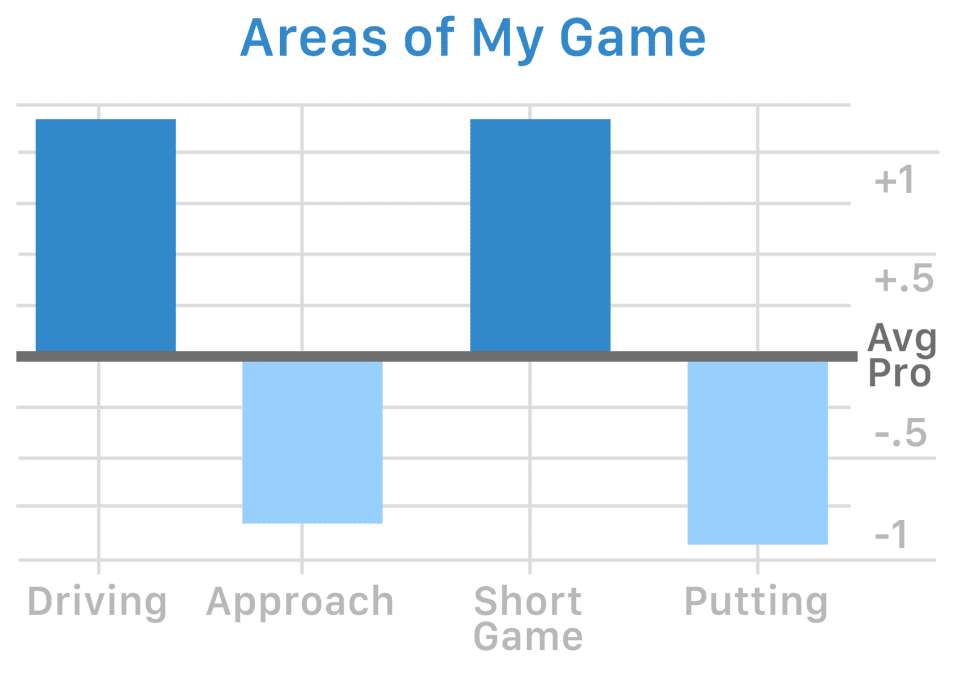
By way of example, a quick review of strokes gained might tell you all the following:
“I’m hitting fewer greens inside 100 yards than my baseline, and my short putts are way below average. But my drives are solid and my lag putting is even better. Rather than beat balls on the driving range, I should be checking my putting alignment and practicing three footers until I can nail 10 in a row. And maybe I should let the club pro check out my wedge game.”
In other words, strokes gained tells you where to practice, and what to ask your pro to help you with.
Information Over Time
Another tremendous benefit of tracking strokes gained is to see how you are performing over time. In the same way I can see my 7-10 foot putts for a single round, I can also see how that number has changed over my last 10, 20, or 50 rounds.
As you work on the right parts of your game and make positive changes, strokes gained will clearly show your progress.
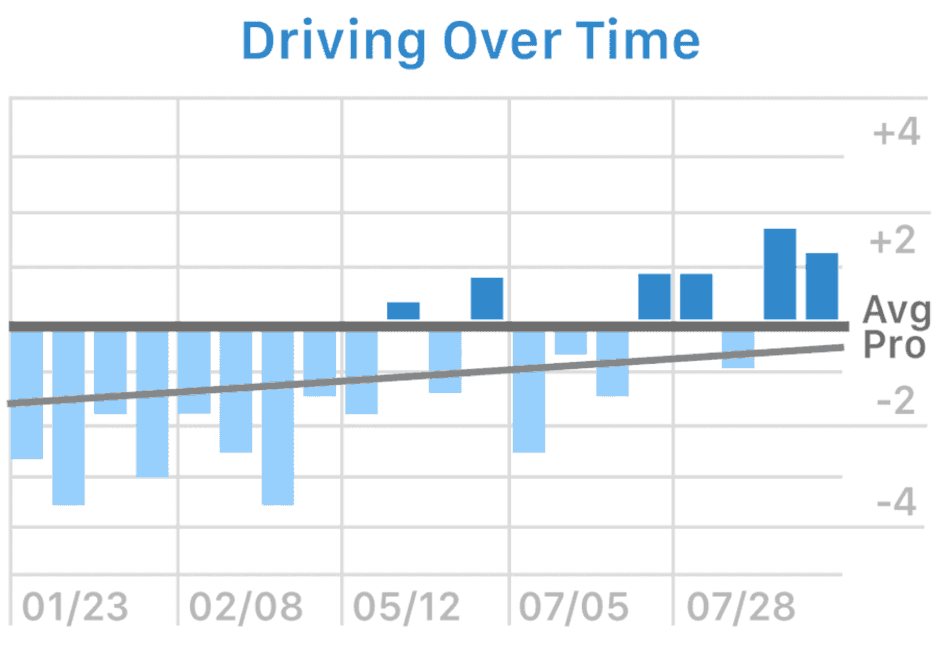
How Strokes Gained Can Be Used
Once you start looking at strokes gained, it’s hard not to see the full power and potential of this stat. Here are a few examples of how strokes gained can impact your golf game.
Find The Biggest Opportunities for Improvement
When you roll up all the strokes gained statistics, you can find the areas of your game that need the most work. You may have a hunch as to where you’re losing strokes, but we’ve found that those hunches often don’t match the data.
When putting together a practice plan, start with the areas with negative strokes gained to take your game to the next level.
Analyze Trends In Your Game
Want to know if you are really getting better? Take a look at your average strokes gained in the individual categories over the last 20 rounds. Are your approach shots getting more accurate, or are they getting less accurate?
You can track trends in your scores, handicap, or traditional golf stats, but they don’t give you nearly the same level of information about how your game is improving (or declining) over time.
Narrow Down Specific Yardages
Let’s say you notice that approach shots are costing you strokes. In order to narrow things down even further, take a look at how the strokes gained from 150-175 yards compare to those from 200-225 yards.
You may find that your longer approach shots are costing you more strokes than your shorter approach shots. It turns out that perfecting your 7-iron won’t help you as much as learning to groove that 3-hybrid.
Understand How Lie Impacts Your Golf Shot
When tracking strokes gained, the lie can make a big difference. How is your short game from the fairway vs the rough or bunker? Many amateurs spend all their practice time in the fairway, but in reality, the rough and bunkers are where they are losing strokes.
Does that analysis apply to you? There’s only one way to find out, which is to track your own strokes gained. If you’re interested in getting started with strokes gained, the Pinpoint Strokes Gained Stats App can make it easy to start tracking.
Understanding The Benefits
For more information on the benefits of strokes gained, including specific examples of strokes gained in action, check out our companion post What Is Strokes Gained?
Final Thoughts
We all have goals in the game of golf. You may be a scratch golfer looking to start winning tournaments. You may be a 20 handicapper trying to make it to a 15. Since strokes gained compares you to a baseline, you can progress in the right direction regardless of your skill level.
Many golfers are surprised by how strokes gained works and how simple it can be. You may have assumed that strokes gained required complex calculations and comparisons. Hopefully we’ve shown that’s not true.
In fact, strokes gained happens to be one of the easiest things to track on the course if you are using the right tools. With the information strokes gained gives us, taking your golf game to the next level is entirely possible.